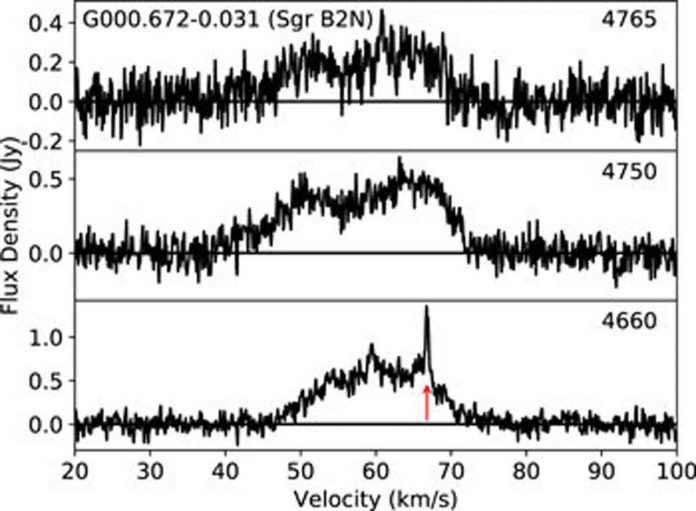National Time Service Center (NTSC) of the Chinese Academy of Sciences (CAS), Shanghai Astronomical Observatory (SHAO) of CAS and SKA Observatory researchers have used the Shanghai Tianma Radio Telescope to search for 4.7 GHz OH masers in 155 northern star forming regions. They discovered eight new sources. The study was published in The Astrophysical Journal.
OH masers are usually detected towards high-mass star formation regions. Observing OH masers at different transitions in the same maser site could place strong constraints on the in-situ physical conditions. This includes H2 density, temperature and velocity gradients.
Scientists investigated the associations between the 18 detected 4.7 GHz OH masers with ground-state OH masers near 1.7 GHz, 6.7 GHz methanol masers and 22 GHz water masers.
Researchers found that the presence of 1665 MHz OH masers was a better indicator of the presence of 4.7 GHz OH masers than 1720 MHz OH masers. The majority of the 4.7 GHz OH masers were associated with 6.7 GHz methanol and/or 22 GHz water masers.
The formation process of high-mass stars is a fundamental and hot topic in astrophysics. Observations of high-mass star formation processes are hindered by their large distances, high extinction and the short timescales of critical evolutionary phases.
OH maser emission arises at radio frequency and is not affected by the dense optical-obscuring gas and dust. It exists at the early stages of high-mass star formation. Scientists could use OH masers to probe high-mass stars at the earliest stages.

